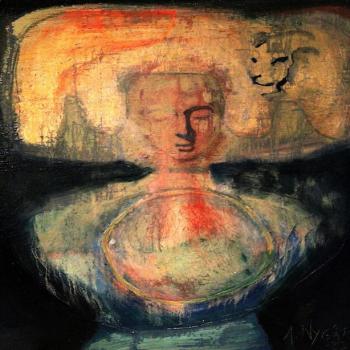Did you read my last story about the hidden nature of God? I wrote about how it can sometimes seem that God is MIA—and how sages from Socrates to Meister Eckhart have told us the best way to find God is to look within ourselves.
Nowhere is this message stronger than in the Gnostic Gospel of Thomas. Of all the Gnostic texts, Thomas has the most credibility with religious scholars. Many believe it predates the four gospels in the Bible and is the first recorded history of the teachings of Jesus. Thomas doesn’t tell a story like the other gospels, it’s a collection of Jesus’s sayings, including this one on knowing God:
The kingdom is inside of you, and it is outside of you. When you come to know yourselves, then you will become known, and you will realize that it is you who are the sons of the living father. But if you will not know yourselves, you dwell in poverty and it is you who are that poverty.
Wow. No less a spiritual authority than Jesus tells us that our own self-knowledge is knowledge of God and that, like him, we are the children of God. If we take this passage at face value, it seems that truly knowing yourself is one of the most important steps a spiritual seeker can take. But what does that entail?
How do you “come to know yourself”?
I’m going on intuition here (or is it faith?), but I believe the key is to put some distance between yourself and the everyday world. You need to get into what I’m calling “the spiritual zone”. You may have heard tales of athletes who, when performing at their very best, are “in the zone.” They get into a flow where they can block out all exterior diversions and become totally absorbed in the moment.
Mihaly Csikszentmihalyi wrote a well-regarded book about the phenomena called Flow: The Psychology of Optimal Experience. He defines flow as a state in which people “are completely absorbed in an activity.” During this “optimal experience” they feel “strong, alert, in effortless control, unselfconscious, and at the peak of their abilities.” It’s a concept often used by baseball players, who say that when they’re in the zone the game slows down and they have the ability to see and hit every pitch.
Is it possible for you or me to “get in the zone” as a way to connect with God? If true, it requires a break from the constant thoughts, desires and fears of the exterior world, and a sojourn to the deepest, calmest part of our interior selves. While some go on extended retreats to get to this place, most of us don’t have the time or resources. The good news: there are a number of methods you can use on a daily basis that can help put you in a flow state in mere minutes.
On the website Contemplative Life, there’s a fascinating page that lists virtually every single method of spiritual and contemplative practice. It includes activities as diverse as yoga, chanting, walking meditation and creative visualization. I believe all have potential of putting you in the spiritual zone, but personally my go-to activities are variations on a similar theme, sitting meditation and contemplative prayer.
Meditation. I’ve talked about the benefits of meditation before and how the practice can help soften the sharpen edges of life as it calms and centers you. There are a number of types of meditation practice and they all have a common trait—if done in the morning, they better prepare you for the day ahead. I also believe that if you’re spiritually inclined, regular meditation has the ability to help you sense the presence of a power within, separate from your own being. (Trouble meditating? Try this tip.)
Centering prayer. In the book The Path of Centering Prayer, David Frenette gives us a history of the prayer and distills the teachings of centering prayer masters like Thomas Merton and Thomas Keating. Frenette describes the prayer as “a state beyond walking, sleeping or dreaming.” While it has much in common with modern-day meditation, its roots extend all the way back to a 14th century Christian text The Cloud of Unknowing.
The purpose of centering prayer is to sense the presence of God within you. Mining Frenette’s writings, I developed a six-point “how to” guide on centering prayer. If the idea of meditation turns you off, try this simple practice each day for two weeks and see if has a positive effect on you. You’ll feel better about the world and the people around you. And, like meditation, if you are spiritually inclined, you just might sense the presence of God.
A Six-Step Guide to Centering Prayer
- Choose a one-or two-syllable sacred word such as God, Jesus, amen, love, peace, stillness, faith or trust.
- Sit comfortably and with your eyes closed. Silently introduce the word as the symbol of your consent to allow God’s presence within you.
- Repeat the word over and over, moving deeper and deeper within yourself.
- If your mind wanders or becomes aware of anything else, gently return to the word.
- Rest in God “as if you put your head back down on the pillow after waking”. Sense the presence of God within you.
- As your prayer ends, let go of the sacred word and rest your mind for a minute or two before going about your business.
I recently published the spiritual fable Thaddeus Squirrel. It’s available at Amazon.

















